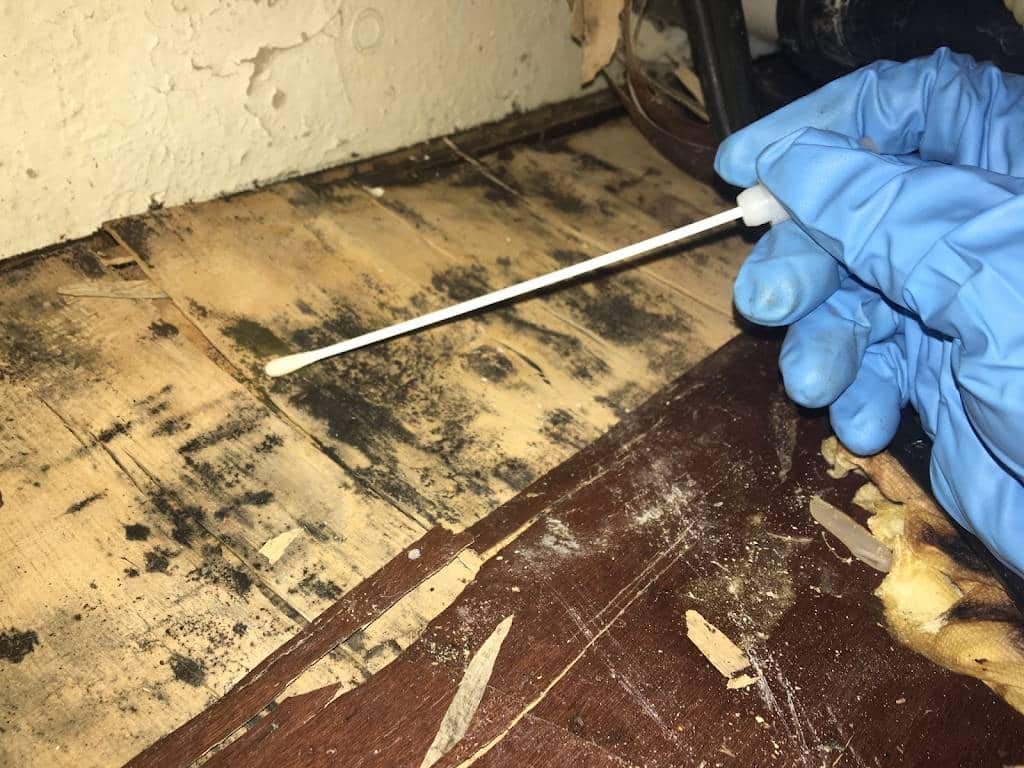Specialist Tips for Post Mold Removal Success
In the world of mold and mildew remediation, effectively eliminating mold is only half the fight; the real difficulty lies in stopping its reappearance. By sticking to skilled ideas and finest methods, individuals can protect their spaces versus mold revival and preserve a healthy and balanced interior atmosphere.
Display Moisture Degrees Consistently
Normal tracking of humidity degrees is vital in making sure the efficiency of article mold remediation initiatives. After completing mold and mildew removal procedures, keeping ideal moisture degrees is essential to prevent mold and mildew re-growth and guarantee a healthy and balanced interior environment. Surveillance humidity degrees enables for very early detection of any spikes or variations that could possibly lead to mold and mildew resurgence. High moisture levels above 60% develop a conducive setting for mold to prosper, making routine keeping track of an aggressive procedure to avoid any future mold and mildew issues - Post Mold Remediation Report.
Making use of hygrometers or moisture meters can help in properly determining humidity levels in various locations of the residential property. These devices give real-time information that enables remediation professionals to make informed decisions relating to ventilation, dehumidification, and other needed activities to preserve ideal humidity levels post-remediation. Additionally, establishing a routine schedule for humidity checks, specifically in risky locations such as restrooms, kitchens, and cellars, is an aggressive strategy to mold and mildew prevention. By consistently keeping track of moisture degrees, property proprietors can successfully reduce the risk of mold and mildew reoccurrence and preserve a healthy and balanced interior environment post-remediation.
Conduct Thorough Inspections Post-Remediation
Complying with the completion of mold and mildew remediation procedures, it is vital to perform extensive inspections to verify the efficiency of the removal procedure. These post-remediation evaluations are vital in ensuring that the mold problem has actually been efficiently dealt with which there is no reappearance or continuing to be mold growth. Evaluations must be performed by certified professionals who have competence in recognizing mold and mildew and analyzing indoor air quality.
During these evaluations, different techniques such as aesthetic analyses, air tasting, and surface area tasting might be utilized to completely examine the remediated locations. Aesthetic evaluations include a thorough examination of the properties to inspect for any type of noticeable indications of mold and mildew growth or water damage. Air tasting assists in figuring out the air-borne mold spore levels, while surface tasting can spot mold particles on surface areas.
Implement Correct Air Flow Methods
After making certain the efficiency of the mold remediation procedure via complete evaluations, the following important step is to concentrate on implementing correct ventilation methods. Ample ventilation is crucial in avoiding mold and mildew reoccurrence by controlling wetness degrees and promoting air flow.
Proper air flow not only help in protecting against mold and mildew growth however additionally adds to the general health and wellness and convenience of passengers. By making certain adequate air flow throughout the property, you can lower the threat of mold and mildew regrowth and produce a healthier living environment.

Usage Mold-Resistant Materials for Services
To enhance the lasting efficiency of mold removal efforts, including mold-resistant materials for repairs is crucial in minimizing the danger of future mold development. Mold-resistant materials are designed to hold up against wetness and hinder mold and mildew growth, making them an essential option for areas vulnerable to moisture and humidity. When repairing locations impacted by mold and mildew, utilizing materials such as mold-resistant drywall, mold-resistant paints, and mold-resistant caulking can assist prevent mold and mildew recurrence.
Mold-resistant drywall is an exceptional choice to standard drywall in locations like basements and washrooms where moisture levels are greater. This kind of drywall has a special layer that resists mold growth even when subjected to damp problems. Furthermore, utilizing mold-resistant paints consisting of antimicrobial representatives can additionally hinder mold and mildew development on wall surfaces and ceilings.
In locations where moisture prevails, such as cooking areas and washrooms, making use of mold-resistant caulking around sinks, bathtubs, and windows can help seal out water and avoid mold from taking hold in cracks and crevices. By purchasing these mold-resistant products throughout repair work post-remediation, you can substantially lower the possibility of future mold concerns and preserve a healthier indoor environment.
Maintain Sanitation and Address Water Issues
After mold remediation, it is important to keep a clean atmosphere to prevent the regrowth of mold and mildew. Leaks, water invasion, or high moisture levels can produce the excellent breeding ground for mold and mildew, so it is imperative to fix any kind of water-related problems promptly.
To keep tidiness, think about making use of HEPA filters in vacuum cleaners and air purifiers to trap mold spores and avoid their blood circulation in the air. Ensuring proper ventilation in areas prone to moisture buildup, such as kitchens website link and restrooms, can help keep humidity degrees in check. By remaining cautious concerning sanitation and resolving water problems quickly, you can efficiently avoid mold reinfestation and keep a healthy and balanced interior atmosphere.
Conclusion

In the realm of mold and mildew removal, effectively eradicating mold is only half the fight; the real obstacle exists in stopping its reappearance. After completing mold remediation procedures, preserving ideal moisture degrees is critical to prevent mold re-growth and guarantee a healthy indoor atmosphere. High moisture degrees above 60% produce a favorable atmosphere for mold and mildew to grow, making normal keeping track of a positive procedure to protect against any kind of future mold and mildew issues.
To enhance the long-term efficiency of mold and mildew remediation initiatives, incorporating mold-resistant products for repair work next page is vital in minimizing the risk of future mold growth. After mold and mildew removal, it is vital to preserve a clean setting to protect against the regrowth of mold and mildew.